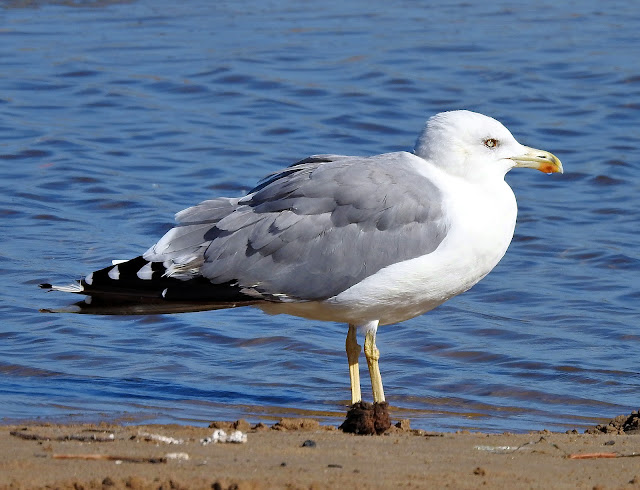The breeding range is centred on the Mediterranean Sea. In North Africa, it is common in Morocco, Algeria and Tunisia and increasing in places. Recent breeding has occurred in Libya and Egypt. In the Middle East, a few breed in Israel, Palestine and Syria with larger numbers in Cyprus and Turkey. In Europe, there are colonies all along the Mediterranean coast, and also on the Atlantic islands and coasts north to Brittany and west to the Azores. It also breeds on the western side of the Black Sea; here it overlaps with the Caspian gull but there is a difference in habitat, with the yellow-legged gull preferring sea cliffs and the Caspian gull flatter shores. In recent decades birds have spread north into central and western Europe. One to four pairs have attempted to breed in southern England since 1995 (sometimes hybrid pairs with lesser black-backed gulls), though colonisation has been very slow.
This Blog contains Wildlife, Plants and Bird Photos from Walks, Safaris, Birding Trips and Vacations. Most of the pictures have been taken with my Nikon P900 and P950X cameras. Just click on any image for a larger picture. On the right column under the Blog Archive are the entries by date. Below that under Animal categories all the diffent species of Animals, Birds, Insects and Plants contained in the website are listed. Clicking on any entry will show all the entries for that species.
Sunday, 24 September 2023
24-9-2023 CAMBRILS, TARRAGONA - YELLOW LEGGED GULL (Larus michahellis)
Many birds remain in the same area all year round, but others migrate to spend the winter in mild areas of western Europe or head south as far as Senegal, Gambia and the Red Sea. There is also extensive northward post-breeding dispersal in the late summer, with numbers in southern England high from July to October.
Like most Larus gulls, they are omnivores and opportunistic foragers. They will scavenge on rubbish tips and elsewhere, as well as seeking suitable prey in fields or on the coast, or robbing smaller gulls and other seabirds of their catches. Although urban populations are generally opportunistic scavengers, they can shift to a predatory diet if necessary; this was observed during the lockdown of Italy in 2020, when the lack of food scraps led the yellow-legged gulls of Rome to take prey as large as rats and rock doves.
Atlantic gulls in Gibraltar have been observed and photographed picking and eating fruit from olive trees in flight.

